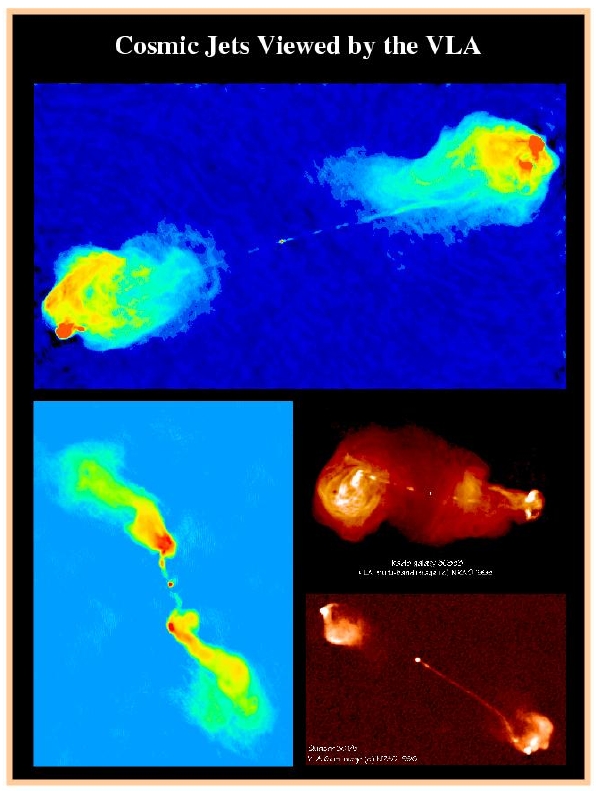Back to VLA Science Highlights



As the VLA began operation, the study of jets emanating from quasars and radio galaxies was in its infancy. The VLA was the first instrument with sufficient resolution to show the kind of detail required to constrain physical models of such jets. The first description of such a jet came from Heber Curtis in 1918, who remarked on a "curious straight ray" of visible light coming from the nucleus of the galaxy M87. In 1963, radio emission was discovered coming from the jet of the quasar 3C273, and radio astronomers subsequently had studied jets coming from other quasars and radio galaxies.
The VLA brought vastly improved imaging capabilities to the study of these jets. With the VLA, observers quickly found many additional examples of all types of jets.
Early in the study of extragalactic jets, two competing theories attempted to explain the bright radio emission coming from "hot spots" in the giant lobes on opposite sides of radio galaxies. One theory said that the material in the lobes had been ejected in a single, "one- shot" event. The other theory held that the "hot spots," hundreds of thousands of light-years from the galaxies' centers, are being continuously resupplied with energy from the core. The latter model predicted that there should be a "channel" visible to radio telescopes through which that energy passes on its way outward.
The VLA found such channels in many galaxies and quasars, giving strong support to the second theory. Today, the "standard model" says that jets originate in the vicinity of a supermassive black hole at the heart of the galaxy. The gravitational energy of the black hole, millions of times more massive than the Sun, accelerates subatomic particles to speeds approaching that of light. The particles emerge from the poles of an "accretion disk" of material orbiting the black hole, and so appear as oppositely-directed jets coming from the galaxy's center.
The VLA also was the first instrument that revealed internal features within jets. The VLA's sensitivity and resolving power, along with its ability to show the magnetic-field structure in the jets, has produced important new data on the physics of these jets and how they change as they move outward from the galaxy's powerful "central engine."
Because astrophysical jets are so pervasive throughout the Universe and represent the most efficient "particle accelerators" known, they remain an invaluable laboratory for advanced physics -- a laboratory that will produce tantalizing new discoveries in the years to come.
